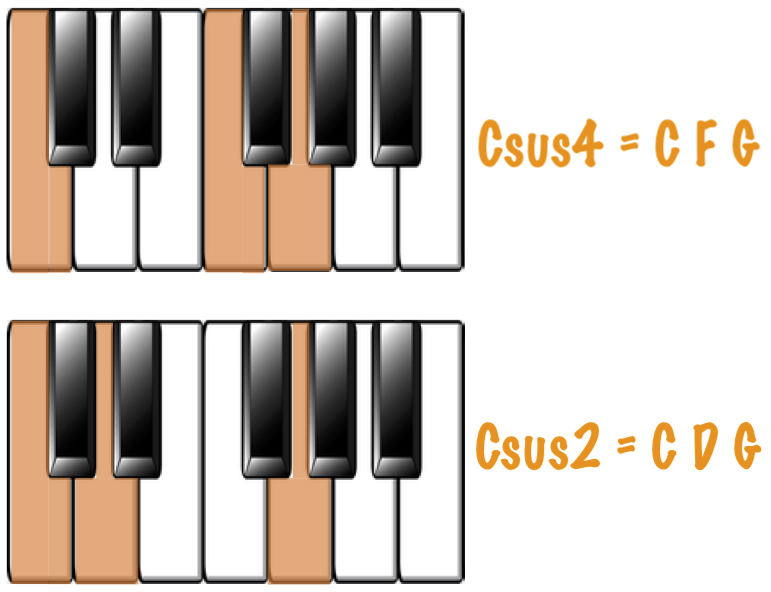Suspended Piano Chords Explained
We see and hear suspended chords in most genres of music; sus2 and sus4. These are simple yet effective chords that can make a chord progression that bit more colourful, and adds an extra sparkle of emotion.
What is the theory of sus chords?
A sus chord is a triad chord, with the 3rd note of the scale being substituted for either the 2nd or 4th note. As they don’t have a major or minor 3rd, they’re neutral chords that are neither major nor minor. A suspended 2nd will usually resolve up to the major/minor 3rd, and a suspended 4th will usually resolve downwards to the major/minor 3rd (typically the major 3rd!). They have a more ’emotional’ feel to them, as the resolution to the 3rd is delayed.
Here’s the formula to work out a sus2 chord from any note: 2 Semitones – 5 Semitones
Here’s the formula to work out a sus4 chord from any note: 5 Semitones – 2 Semitones
Eg; a Csus4 chord and a Csus2 chord would be as follows:

On music notation, they look very distinct, due to the nature of how 2nd intervals look (squashed side-by-side!). Here is how both a Csus2 and Csus4 would look. This appearance would look similar for all sus2 and sus4 chords.


Below is a lesson on an ‘Open Sus Chord’ improvisation idea, which would make interesting accompaniment. It’s based on breaking up a simple 3-note open sus chord, whilst simply changing the bass note/chord beneath – try it out!
This lesson below is about how you can incorporate a Dominant 7th sus4 chord, as a beautiful way to end a piece of music using a V-I perfect cadence. If you haven’t tried playing Piano crossing your hands over the other yet, then you simply must try this!
I bet now that you’ve learned what suspended Piano chords are, you’ll notice them all over the place! Happy playing!

